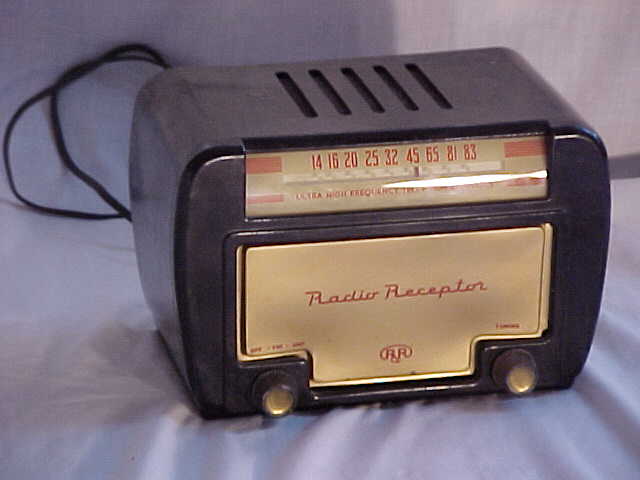Radio Receptor C1709-P

|
The Radio Receptor company was founded in 1922 and made electronic parts and devices for almost 50 years in its Brooklyn NY factories. In the early 1950s they were a major maker of selenium rectifiers, industrial heaters, military electronics, and transistors. So far as I know, this model C1709-P was the only UHF converter they made for home use.
The bakelite cabinet is that of a table radio, a Dewald 616, with the original speaker grill area replaced with a heavy plastic plate, reverse-painted gold. It houses a very substantial chassis and heavily shielded electronics. The main tuning section is labeled "Cavi-Tuner," implying a cavity-type frequency control system, a variety often used in microwave communication. This design might well have been borrowed from a military product. The circuit uses the usual 6AF4 oscillator and a 6BK7 IF amplifier seen in many UHF converters. However, the 6X4 rectifier tube is a bit unusual, since most other converters of the period used selenium rectifier stacks, and RR's Seletron division was a major maker of those early semiconductor rectifiers. The construction is quite robust (read: heavy) and the circuit must have used high quality components, since of the half-dozen or so Radio Receptor converters I've owned, most of them worked well to the end of standard-definition broadcasts. Several other manufacturers thought highly enough of the C1709-P to have bought and relabeled it under their own names. (See "Radio Receptor Clones") |
Updated February 4, 2020